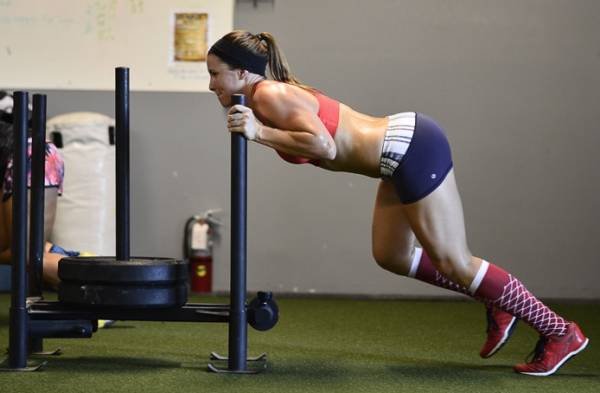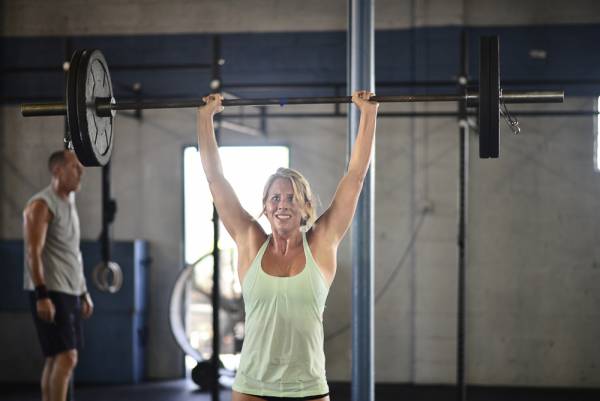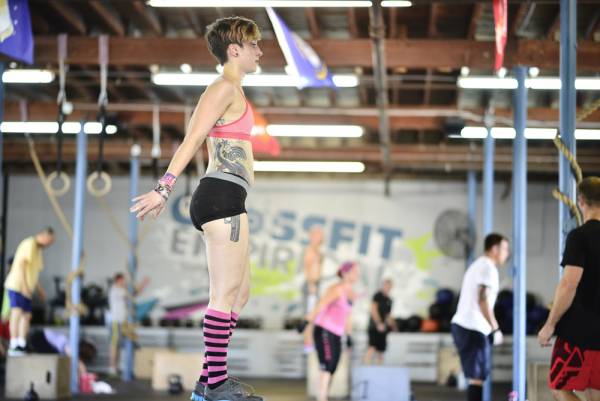I know many ladies out there are curious about testosterone and the role it plays in their training. Since more women are training in sports such as Olympic lifting and powerlifting, more women are curious how those activities impact them hormonally.
We hear a lot about testosterone in regards to men. But I’m going to address the part testosterone plays for female athletes. Specifically, I’ll outline how resistance training affects the female body and the best exercises you can do to optimize your testosterone.
RELATED: The Role of Testosterone for the Female Athlete
Untrained Females and Resistance Training
A study conducted by the European Journal of Applied Physiology set to investigate hormonal adaptation of acute resistance exercise, and determined whether these training adaptations are observed within an eight week period in untrained men and women. For our purposes, we are going to focus on mainly the women for this study.
“The results showed an increase in pre-exercise concentrations of testosterone in both men and women after both six and eight weeks of training.”
The protocol for this study consisted of a one-week pre-conditioning orientation phase, followed by eight weeks of heavy resistance training. Participants did three lower-limb exercises for the quadriceps femoris muscle group. These exercises were the squat, leg press, and knee/leg extension. These exercises were performed twice a week, with every other Wednesday used for one-rep max testing.
Blood samples were obtained pre-exercise (Pre-Ex), immediately post exercise (IP), and five minutes post exercise (5-P) during the first week of training (T-1) to determine blood concentrations of testosterone (TT). Blood was sampled again after six weeks (T-2) and eight weeks (T-3) of training.
The results showed an increase in pre-exercise concentrations of testosterone in both men and women after both six and eight weeks of training. This illustrates that untrained individuals may exhibit early-phase endocrine adaptations during a resistance training program.
RELATED: Ultimate Guide for Lean Gains, Part 2: Your Lifting Program
Endocrine adaptations are similar to muscular adaptations brought about by programming and exercise. An example of this would be subtle increases in testosterone over the course of a resistance training program that may help to mediate changes in protein synthesis, which then leads to increased muscle fiber size (this will be important later).

Resistance Training and Testosterone in Women
According to the Journal of Sports Medicine, testosterone is important for the desired adaptations to resistance exercise and training. Testosterone is considered a major promoter of muscle growth and the subsequent increase in muscle strength and response…in males.
RELATED: Science Takes a Look: Cardio First or Strength First?
As we know, acute endocrine response to heavy resistance exercises generally includes increased secretion of various anabolic hormones in men. Findings on women in regard to testosterone response have been ambiguous, with both increases and no changes observed in response to a bout of heavy resistance exercise. What can be said about testosterone for both men and women is that testosterone is an important modulator of muscle mass, and acute increases in testosterone can be induced by resistance exercise.
For women, remember, the key word is “can.” Many factors affect how women react to resistance training, including the program itself, the trainee’s age, and the movement efficiency of the female. In regard to programming in general, the variables within must be selected such that the resistance exercise session contains high volume and metabolic demand in order to induce an acute testosterone response.
“Doing too many metcons or HIIT sessions can cause issues and may even lower your testosterone, as well as many other metabolic hormones.”
How to Train for Higher Testosterone Levels in Females
Any strength cycle longer than eight weeks seems to be the precursor to endocrine adaptation for increased testosterone levels. You may start with lower testosterone levels in the beginning, but as you progress in your strength cycle, you should see elevations in testosterone in the second and third phases.
When I talk about “increases,” I mean increases in resting, free testosterone and elevations post-exercise. The catch is, of course, that you need to do this sort of programming correctly. Doing too many metcons or HIIT sessions can cause issues and may even lower your testosterone, as well as many other metabolic hormones.

Strength Exercises for Increasing Testosterone
- Squat– The basic squat uses several large muscles simultaneously. Any squat variation will increase your testosterone, including the front squat and hack squat.
- Leg Press and Leg Extension– If you use machines as part of your workout plan, the leg press and extension are movements that also incorporate your bigger leg musculature, which can increase your testosterone.
- Deadlift– Another multi-joint movement that uses the bigger muscles of the lower body.
- Olympic Lifts– In general, Olympic lifting will increase your testosterone and decrease your cortisol, if done correctly. Everything associated with the lifts, including the auxiliary workouts such as complexes, will help you with this. But it’s important to do complexes correctly and know they are there not just for conditioning purposes, but to work strength in each aspect of the movement.
RELATED: You Are Missing the Point With Your Complexes
Your best chance for an increase in testosterone levels involves:
- Moderate weight during the training phases prescribing moderate reps and sets.
- A test week after each phase of your training.
- A deload week at the end of each cycle.
- Including days of pure strength work without metcons or HIIT workouts.
Plyometric Exercises for Increasing Testosterone
Plyometrics can also work to build your testosterone levels. If you are doing plyometric work, it’s best to combine resistance training of the upper body with plyometrics for the lower body.
“For females, programming is the key to finding the best hormonal balance and response.”
The general purpose of plyometrics is to increase the power of movements by using both the natural elastic components of muscle and tendon and the stretch reflex. Essentially, you are using elastic energy and more motor-recruitment patterns. We could write an entire book on plyometrics, but just know movements like the box jump can improve your testosterone and metabolic hormones.

Conclusion
Your best bet for increasing your testosterone response is a mixture of cardiovascular exercise, high intensity interval training, and resistance training. For females, programming is the key to finding the best hormonal balance and response. Improper programming can hinder hormonal responses in the female body.
References:
1. Kraemer, WJ. et. al. “The Effects of Short-Term Resistance Training on Endocrine Function in Men and Women.” The European Journal of Applied Physiology and Occupational Physiology (1998): 69-76, accessed November 11, 2014, doi: 10.1007/S004210050389
2. Vingren, JL. Et. al. “Testosterone Physiology in Resistance Exercise and Training: The Up-Stream Regulatory Elements.” The Journal of Sports Medicine (2010): 1037-53, accessed November 11, 2014, doi: 10.2165/11536910-000000000-00000.
3. Tate, P., Seely’s Principles of Anatomy and Physiology. (New York: McGraw Hill Companies, 2012), 37-38
4. Abrahams, P., How the Body Works. (New York: Metro Books, 2007), 263
5. Baechle, TR., and Earle, RW., Essentials of Strength Training and Conditioning: Third Edition (Illinois: Human Kinetics, 2008), 414-415, 423
Photos courtesy of CrossFit Empirical.






